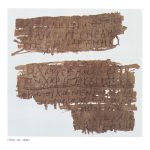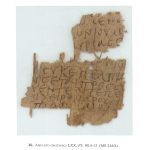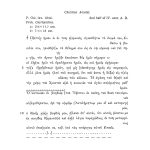| Artefact ID | 999 |
| TM ID | TM 61840 |
| Findspot (DEChriM ID) | 28 (al-Bahnasā) | Class | Textual |
| Material | Papyrus |
| Writing medium | Sheet/roll |
| Text content | Subliterary |
| Language | Greek |
| Description | P.Schøyen I 16 (P.Schoyen I 16): Amulet or school exercise? The papyrus sheet consists of three separate fragments that contain the text of the Lord’s Prayer and a doxology (Matt. 6:9-13 and 2 Cor. 13:13), followed by LXX Ps. 90:1-13. P.Oslo inv. 1644 consists of the two top fragments, whereas MS 244/4 conserves the last part of Ps. 90. They were reunited in the edition of P.Schøyen I 16. The writing runs against the fibres in a single column; top fragments conserves upper and left margin, the text starts with a staurogram. The handwriting is an early byzantine uncial practised albeit not very elegant neither consistent. Phonetic spelling; inconsistent use of abbreviated nomina sacra. Verso is blank.
The editors of these fragments took them for an amulet because of the frequent use of the Lord’s Prayer and Ps. 90 in Christian magic papyri, but this has been questioned by Carlig and de Haro Sanchez arguing that it could be a writing exercise, perhaps in the context of liturgical learning (De Bruyn 2017: 162; Carlig and de Haro Sanchez 2015: 76-77). De Bruyn 2017: 162 adds that the ornamented line separating the doxology and the psalm citation below may tip the balance in favour of their view, since such lines appear on occasion in writing exercises (referring to Cribiore 1996: 79). See also now the P.Math school codex also supposedly coming from the oxyrhynchite area. |
| Selection criteria | Subliterary genre (Liturgical), Christian terms/formulas/concepts, Christian symbols/gestures/isopsephy, Nomina sacra, Biblical quote or paraphrase |
| Date from | 350 |
| Date to | 450 |
| Dating criteria | Palaeography. Dated by R. Pintaudi in late 4th if not early 5th c. in P.Schoyen I 16. |
| Absolute/relative date | Relative date |
| Archaeological context | MS 244/4 was purchased in 1989 from the book dealer Hans P. Kraus. P.Oslo. inv. 1644 was purchased in Egypt in 1936 (Amundsen 1945: 141) (but 1976 in P.Schoyen I 16) together with documents coming from Oxyrhynchos. As such, a provenance from Oxyrhynchos is likely but not certain. |
| Accession number | Oslo, Private collection Schøyen MS 244/4 + Oslo, University Library P. 1644 |


 Json data
Json data





